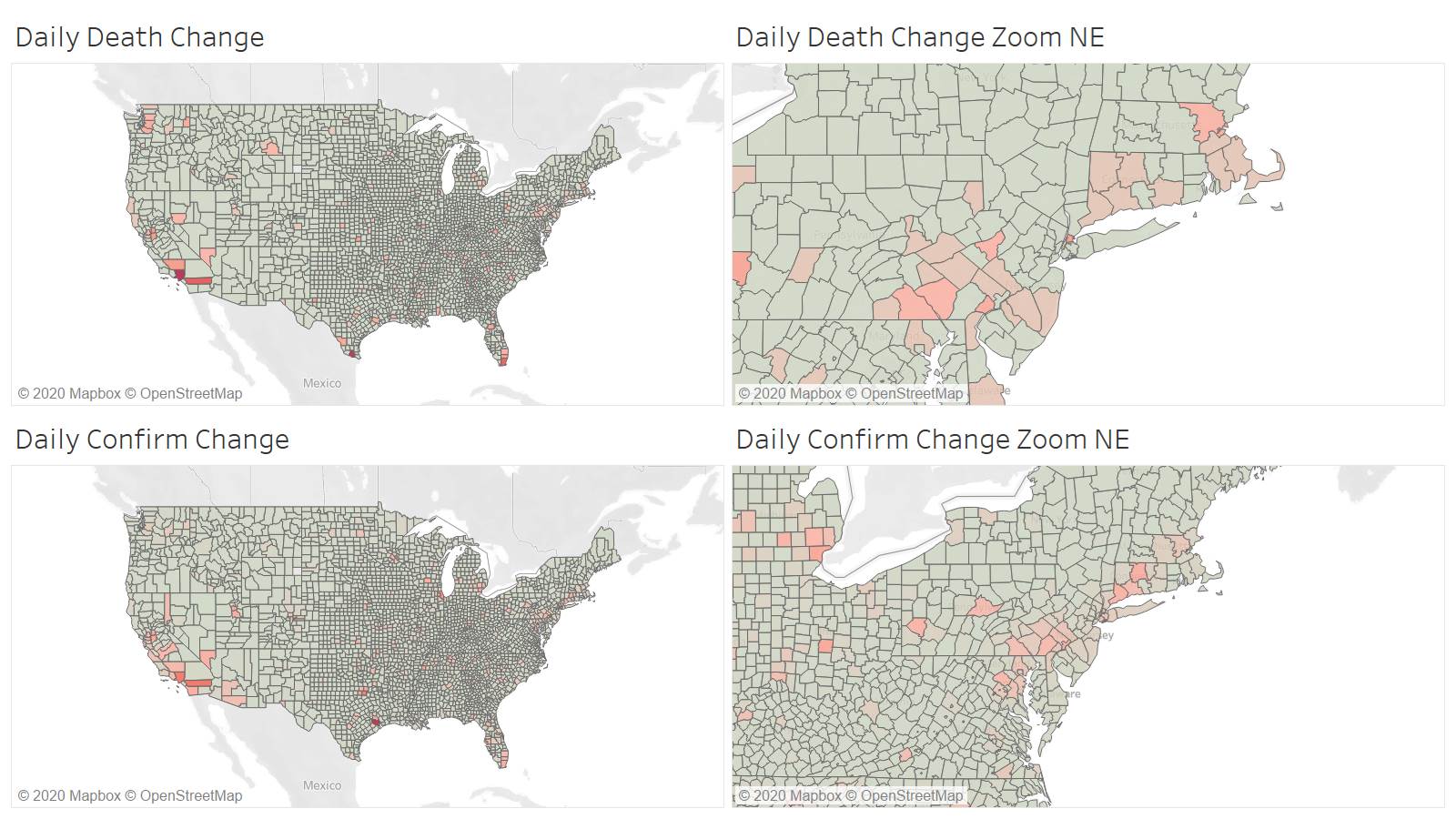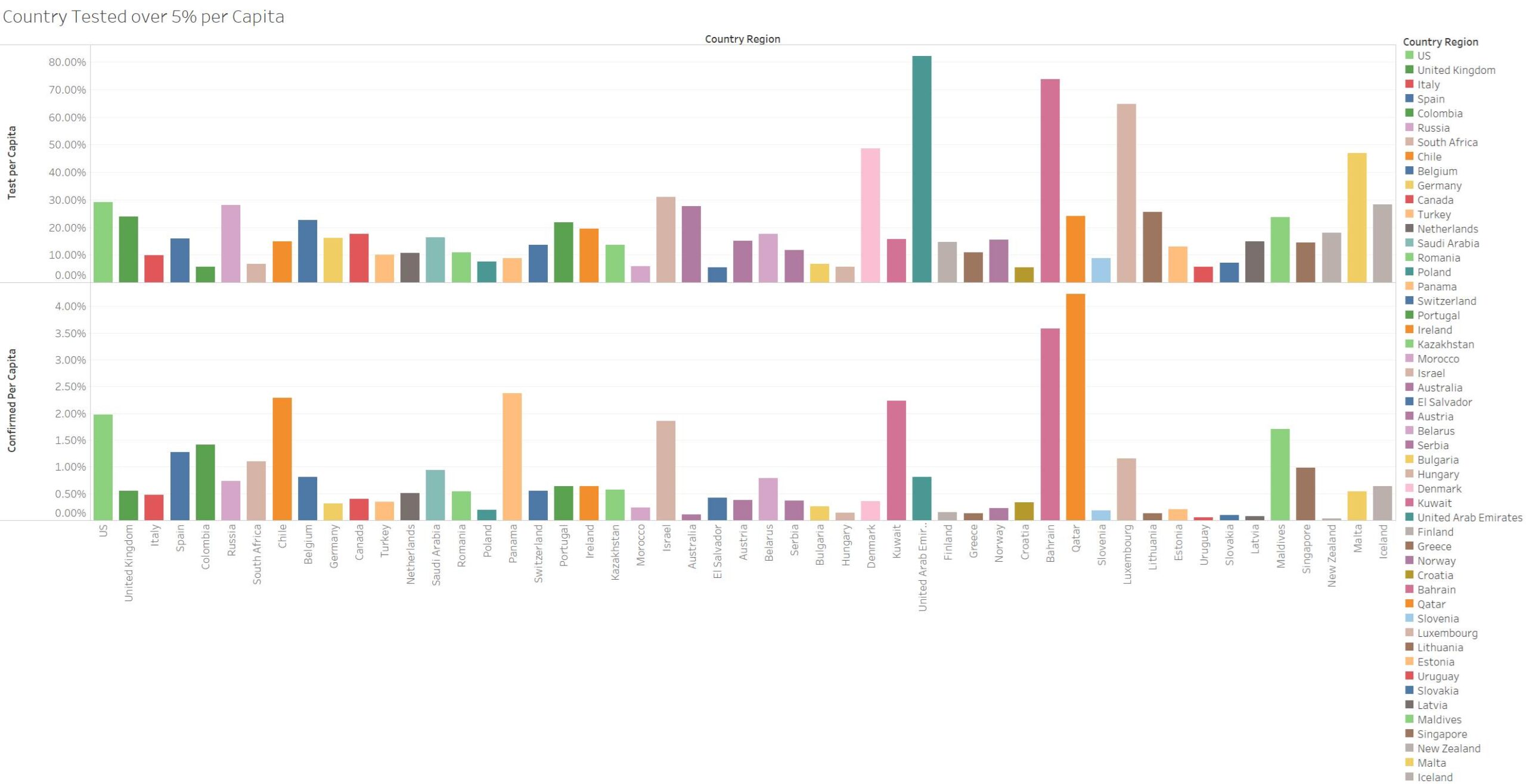PCR Test is still on the mind – as discussed previously PCR Test is not black and white and requires some “art” – https://covid19mathblog.com/2020/08/covid-8-31-20/
Interesting paper on PCR – concerned about false positives – https://www.medrxiv.org/content/10.1101/2020.04.26.20080911v3.full.pdf
“: Unlike previous epidemics, in addressing COVID-19 nearly all international
health organizations and national health ministries have treated a single positive result
from a PCR-based test as confirmation of infection, even in asymptomatic persons
without any history of exposure. This is based on a widespread belief that positive
results in these tests are highly reliable. However, data on PCR-based tests for similar
viruses show that PCR-based testing produces enough false positive results to make
positive results highly unreliable over a broad range of real-world scenarios.”
“The high specificities (usually 100%) reported in PCR-based tests for SARS-CoV-2 infection do
not represent the real-world use of these tests, where contamination and human error produce
significant rates of false positives.
Widespread misunderstanding of these false positive rates affects an array of clinical, case
management and health policy decisions. Similarly, health authorities’ guidance on interpreting
test results is often wrong”
“r, in practice, PCR-based testing produces a significant number of false positive results,
making positive results highly unreliable over a broad range of real-world scenarios.
Consequently, the frequent assertion that positive test results for SARS-CoV-2 are more reliable
than negative results is wrong most of the time, and the widespread and official reliance on a
single positive PCR result as a sufficient basis for diagnosis—which was not the rule in previous
epidemics—has been a mistake.”
“The accuracy of a diagnostic test is measured by sensitivity, which is the proportion of infected
individuals that test positive, and specificity, the proportion of uninfected individuals that test
negative. Although SARS-CoV-2 PCR assays are widely reported to have 100% specificity
(Supplemental Material-Version 3: Table S1), this refers only to the tests’ lack of reaction with
substances other than SARS-CoV-2 genetic material (analytical specificity), and not to the
potential for incorrect results in the real-world implementation of testing (clinical specificity)
where contamination or human error can generate false positives during sample collection,
transport and analysis.”
“In previous epidemics, health authorities voiced concerns that false positive results from PCRbased tests could harm both the individuals tested and the ability of government agencies to
assess the outbreak, and they adopted measures to limit the occurrence of false positives”
“testing should be limited to
persons with a higher probability of infection, or reliability should be improved by requiring the
confirmation of positive results with a second, independent test.”
“The reliability of positive results falls to near zero when test positivity approaches the FPR (False positive rate).
However, even with positivities up to around four times the FPR, over 20% of positive results
are likely to be false positives”
“Most false positives in PCR-based tests are probably due to contamination, derived from such
sources as positive samples analyzed by the laboratory, positive controls, contaminated
reagents, or infected workers. Massive amplification of nucleic acids makes PCR-based assays
highly sensitive, but also highly vulnerable to minute levels of contamination which can produce
false positives that are indistinguishable from true positives. False positives can also be
produced by sample mix-ups or data handling errors.2”
“Much attention has been paid to false negative rates in SARS-CoV-2 PCR testing
(Supplemental Material-Version 3: Table S2) and to FPRs in antibody testing,27 but we found
virtually no discussion in the scientific or medical literature of FPRs in SARS-CoV-2 PCR testing
(Supplemental Material-Version 3: Previous Reporting).”
“Like all tests, PCR-based assays are subject to error that includes both false negative and false
positive results. A successful testing program must understand the error rates and use tests
appropriately.”
Also very important to note are the authors.
“Andrew N. Cohen, Ph.D.1
*, Bruce Kessel, M.D.2
, Michael G. Milgroom, Ph.D.3
1
Center for Research on Aquatic Bioinvasions, Richmond CA, USA. [email protected]
2
John A. Burns School of Medicine, University of Hawai’i, Honolulu HI, USA.
3
School of Integrative Plant Science, Plant Pathology and Plant-Microbe Biology Section,
Cornell University, Ithaca NY, USA. mgm5”
Note 2 of them in plant/biology – interesting right? Why you ask – lets connect the dots – it would seem PCR is used quite often in biology for markers – back in June Dr Cohen was noted in this report on invasion of zebra mussels- https://www.npr.org/sections/health-shots/2020/06/15/871186164/what-zebra-mussels-can-tell-us-about-errors-in-coronavirus-tests
“In 2007, the state of California hired him to fight back the invasion of non-native mussels, which had been wreaking havoc on ecosystems in the eastern United States.
"We began getting reports after that of these mussels showing up all across the western U.S.," he says.
Scientists were using a clever technique to find them. They’d take a water sample and then look for the tiniest traces of genetic material from these mussels. They used a test called PCR (short for polymerase chain reaction), which vastly amplifies genetic material to look for mussel DNA. This is the same technology used to diagnose COVID-19.”
“"I began to realize that many of these — if not all of these — were false positives, especially when they started being reported in waters that had chemistry that would not allow the mussels to reproduce and establish themselves," he says.
Cohen wanted to understand why these tests were going awry, so he could spread the word to the labs that were using them. "I eventually turned to the medical literature to look at assessments that had been done of medical diagnostic labs that used PCR-based testing in humans."
Cohen discovered that false positives were actually fairly common. The best labs reported few if any, but other labs reported up to 8% of their positive results were false positives. The average was around 2% false positive.”
“Dr. Bobbi Pritt, a clinical microbiologist who chairs the microbiology committee for the College of American Pathologists, says his numbers seem reasonable.
"There’s no 100% perfect test," says Pritt, who works at the Mayo Clinic.
The PCR tests, when done perfectly, do boast a very low false-positive rate. But they’re not always done perfectly.
Certified labs like hers use procedures to reduce the risk of false test results, since a false-positive test can lead to a medical misdiagnosis. But slip-ups are inevitable.
Most errors are caused by poor sample handling or other errors even before a sample gets to the lab, she says.
And PCR is so incredibly sensitive, contamination is a particular concern. Even the tiniest amount of stray material in a lab can spell trouble, Pritt says.”
“there’s a lot at stake for getting these tests right.
People can be sent to isolation for weeks with a positive test result. Hospitals risk running short-staffed if too many workers test positive. People who are diagnosed with COVID-19 in a hospital may not be allowed to return to nursing homes or other senior living situations.”
“If a PCR test has a 2% error rate in an area where only 1% of the people are actually infected, Cohen notes, most of the positive results will be false positives.
That’s the lesson from his attempt to track invasive mussels.
"Actually, nobody has ever found a quagga or zebra mussel" in the vast majority of western waters where PCR tests indicated mussels were present, he says. It turned out that in those water bodies, all the positive test results were false.”
So the false positive rates seem low but the math is very interesting as bolded in the above statement. We are talking about per capita confirmations in the low digits worldwide so an 8% error would definitely mean you are producing a lot more false positives for every positive in the region given region is really <8%.
As always follow the money if you are concerned – Someone needs to check out the money trail – who is getting paid for all these test – IF they showed no positives in a region would they test more? IF you show 1 positive think about how many people need to be tested now? Contact tracing blows up testing as positives accumulate regardless of true of false testing. We need to make sure labs are disincentivized to do more testing and/or are strictly tested and verified. I am thinking in other countries the testing/labs are state run whereas in the US we are largely private institutions with shareholder incentives and dividends to pay.
Another potential solution to covid19 – https://www.complex.com/life/2020/09/university-of-pittsburgh-scientists-say-theyve-discovered-molecule-that-blocks-covid
“Researchers at the University of Pittsburgh have isolated a biomolecule that they say neutralizes the virus that causes COVID-19 "completely and specifically."”
“Researchers state that Ab8 is “highly effective,” when used in mice and hamsters, in both preventing and treating SARS-CoV-2 infections. They say that it blocked the virus from entering the cells of mice, and that the rodents that were treated with it had significantly less of the virus when compared to mice that were not treated.”
A good reporting day – Death in US 422. India still not reporting.
CA leads the death 61
LA county beat out Hidalgo County TX by 1 death – 23
Interesting to see the UAE has tested over 80% of their population and ended up under 1% confirmed. Therefore IF you had a false positive rate >1% a lot the positives would be false.



